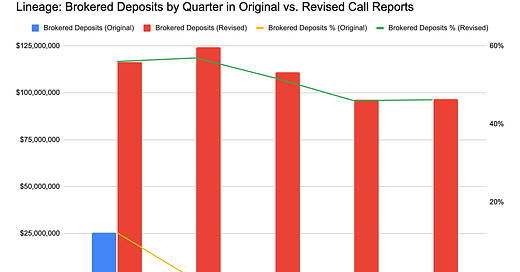Breaking: Lineage Hit With FDIC Consent Order
Lineage, Partner to Synapse, Synctera, Is Moving To Wind Down Banking-as-a-Service Relationships, Sources Say
Hey all, Jason here.
I know, I know — it’s Friday, what am I doing in your inbox?
Given the news that Lineage Bank has entered into a consent order with the FDIC, I wanted to dash off a quick update before the weekend. You’ll still see the regularly scheduled newsletter in your inbox on Sunday morning.
If you enjoy reading this newsletter each Sunday and f…


